Johnson has been recalled and will play tonight in Ottawa after Carl Soderberg suffered an injury last night and did not travel to Ottawa. In seven games with the Bruins, Johnson has averaged 9:44 TOI with no points and a minus-3 rating.
NHL Hockey Player News
Sheahan recorded his first two assists of his NHL career on Saturday vs Toronto, they were the only points he recorded in four games during his call-up.

Eriksson was a seventh round pick of the Flyers in 2008 and has yet to play in an NHL game. He spent the last five seasons in Sweden but has started his North American hockey career 8-10-1 with a 2.77 GAA and .907 SV% with Utica. His suggests that Roberto Luongo will miss some time.
Shore has no points in two games with Florida this season. With San Antonio he has yet to record a goal but has 15 assists in 28 games. His recall suggests that Scottie Upshall (upper-body) will not play tonight.

This marks the second NHL recall of the season for Boychuk, 24, who earned an assist during his only NHL game this season, a 5-3 Carolina victory against San Jose on December 6. He has appeared in 29 games with Charlotte this season, and leads the Checkers in goals (14) and points (27).
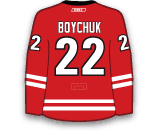
Larsson played 18:51, recording no points on Monday after he was recalled because multiple forwards were battling the flu.
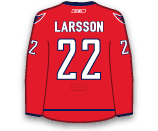
Svedberg has appeared in 20 games for the Providence this season, racking up an 11-5-3 record with a 2.91 GAA, .907 SV% and one shutout.? The 24-year-old netminder has played in a total of 68 games for Providence since joining the team in 2012, earning a career 48-13-5 AHL record. The 2012-13 campaign with the P-Bruins saw Svedberg win 37 games (2nd in the AHL) with a 2.17 GAA (5th), .925 SV% (3rd) and four shutouts to earn himself the Aldege “Baz” Bastien Memorial Award, which is given annually to the AHL’s outstanding goaltender.

With Zach Parise nursing a lower-body injury, the Wild have recalled Veilleux, who skated in his 11th game this season on Monday. He has no points and a minus-5 rating this season.

Jaskin was the 41st overall pick in the 2011 NHL Entry Draft and is in his first season with the Chicago Wolves (AHL). In 20 games he has 17 points (9G / 8A) and is expected to play top-6 minutes tonight with Alex Steen sidelined. Jaskin, 20, played in two NHL games with the Blues last season.

Tootoo dressed in two games during his call-up and recorded one assist on Saturday. He provided some much needed energy for the Red Wings, but with Gustav Nyquist returning to the lineup tonight, Tootoo has bee reassigned.
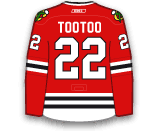
Petrovic was the 36th overall pick in 2010. The 6-foot-4 defenseman skated in his first six NHL games with the Panthers last year. In 30 games with San Antonio this season, Petrovic has two goals and 11 points with a plus-6 rating.

A number of Sabres' players are battling the flu right now so Larsson will suit up along with Mark Pysyk. Larsson recorded just one assist in 17 games with the Sabres earlier in the year.

Veilleux has skated in 10 games with Minnesota this season and has tallied 101 points (46-55=101) and 323 penalty minutes (PIM) in 470 NHL games with Minnesota, Tampa Bay and New Jersey. He ranks fifth in Wild history in hits (407), eighth in games played (392), ninth in PIM (275) and 11th in shots (565).

Haula has collected two assists and a plus-3 rating in 10 games with Minnesota this season. The 5-foot-11, 192-pound has tallied 14 points (7G / 7A) in 20 games with Iowa this season. The 22-year-old ranks tied for first on the team with four power-play goals, and third in goals and scoring.

Pysyk was sent down on December 17 but is back just six days later. He has recorded four assists and a minus-11 in 31 games with the Sabres.
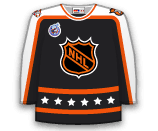
Nieto has skated in 23 games with the Sharks this season, he has two goals and four assists. With Tomas Hertl out for at least one month, Nieto's stay is expected to be a lengthy one this time around.

Bulmer totalled six shots and two PIMs in four games with Minnesota after being recalled December 12. The 21-year-old has recorded 12 points (9G / 3A), 20 PIM and three power-play goals in 21 games with Iowa this season.

Simpson only 20 minutes of NHL action while with the Blackhawks. He relieved Antti Raanta on December 14, he allowed two goals on seven shots.

LaBarbera was acquired from the Oilers on December 14 and will likely serve as Antti Raanta's backup until Corey Crawford is healthy. Even when Crawford is healthy LaBarbera could stay with the club if they want Raanta to get more playing time in Rockford.
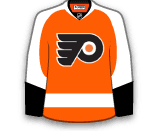
With Josh Harding going on injured reserve, Gustafsson has been recalled to serve as Niklas Backstrom's backup while Harding is out. Gustafsson has never played a game in the NHL and is in his first season with Iowa. He is 4-4-0 with a 2.95 GAA and .898 SV% in nine games.
